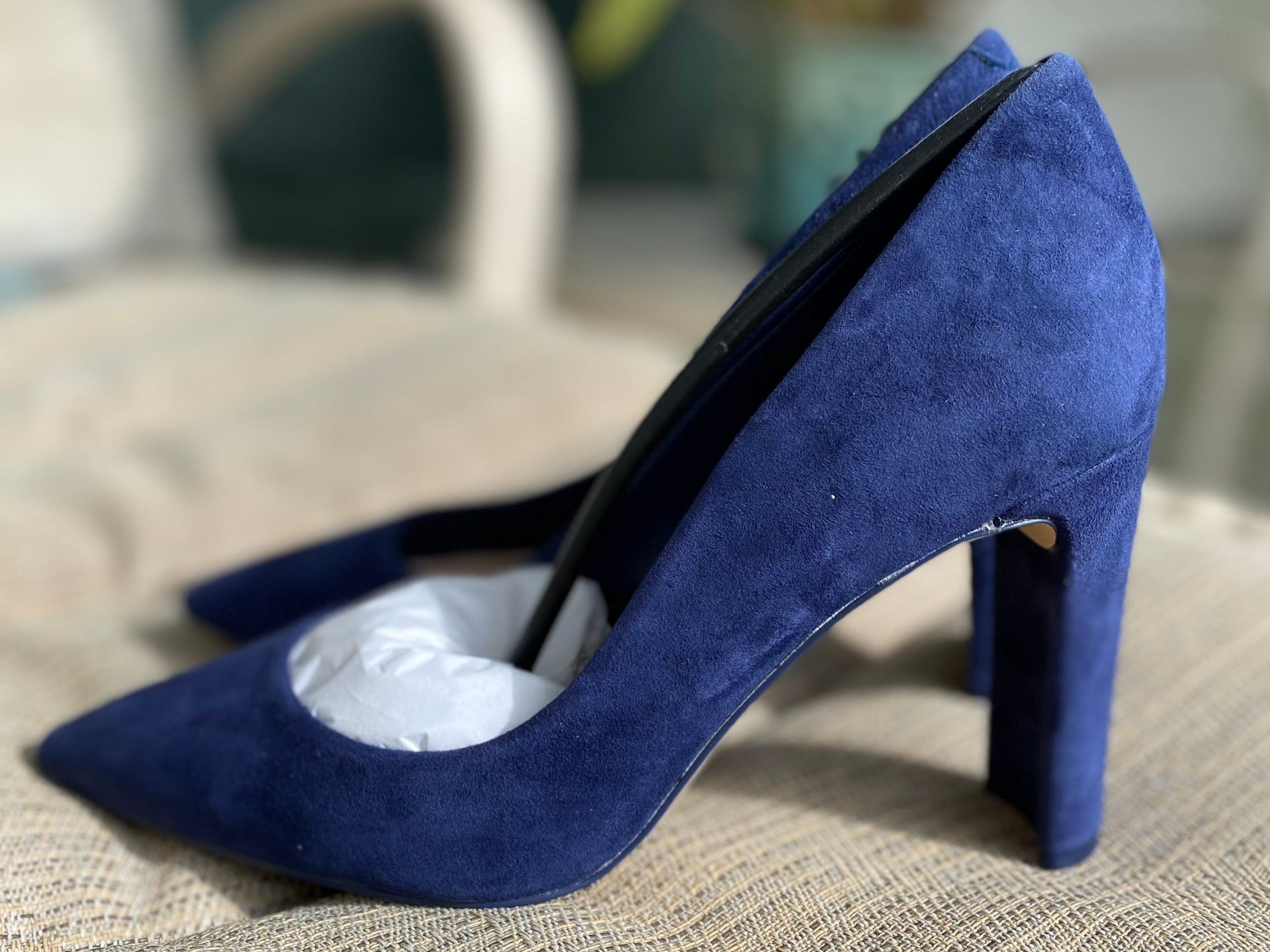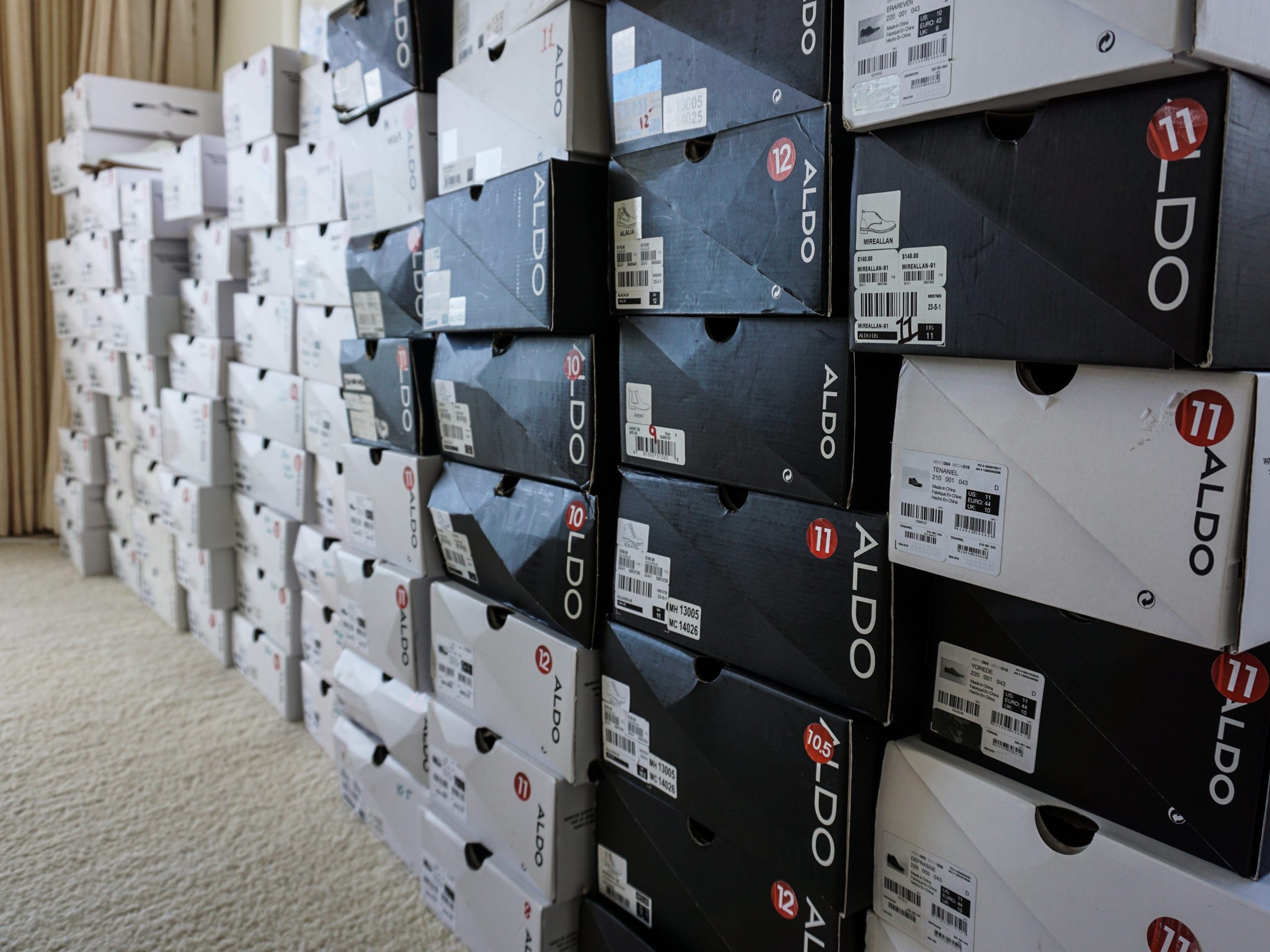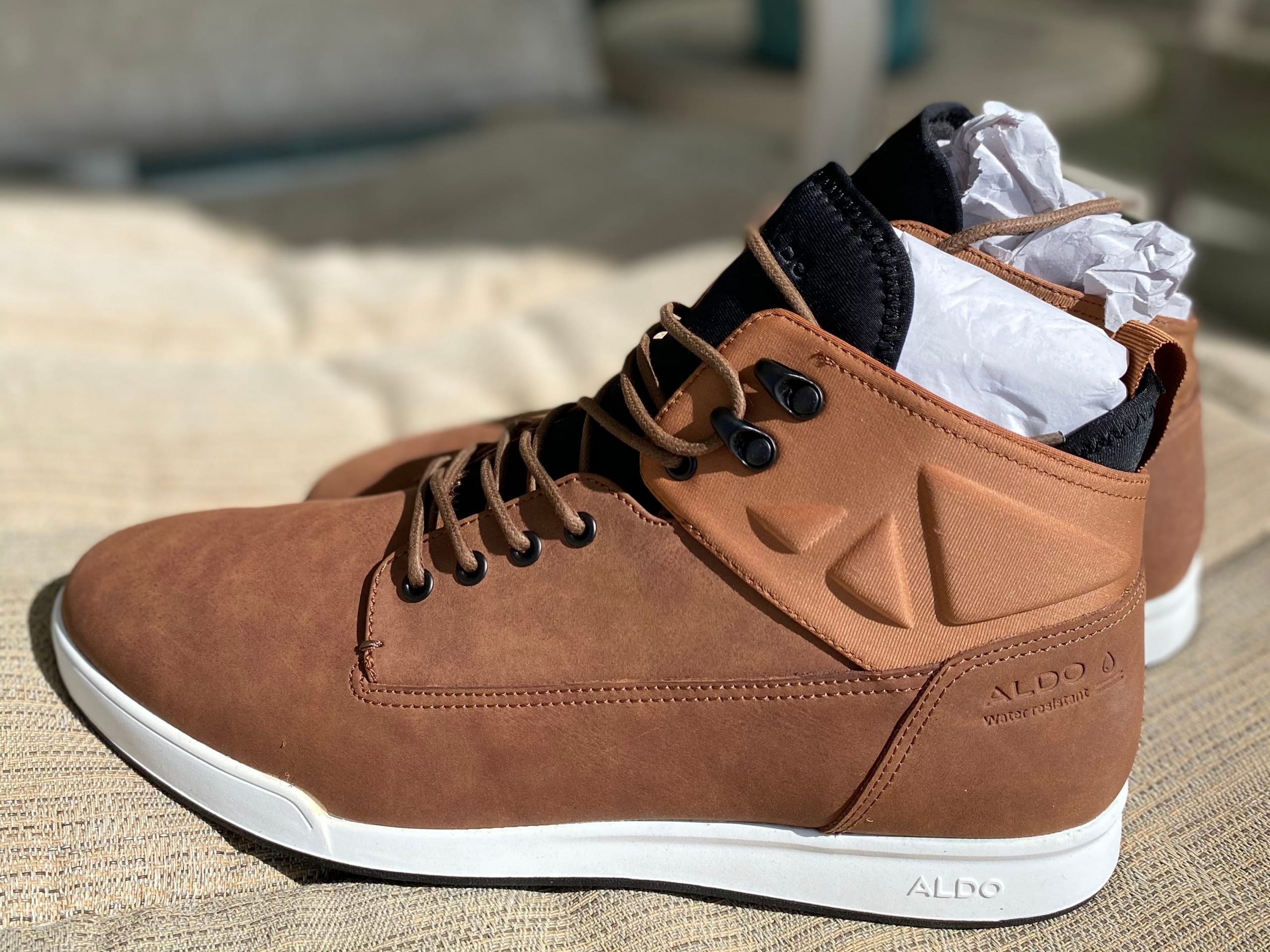
- In November, my wife accidentally purchased 16 dresses on Poshmark and set out to earn the money back by flipping shoes on the app.
- She found a local Aldo store that was about to shutter and bought 127 pairs of shoes at fire-sale prices.
- Two months in, after spending more than 100 hours on her operation, she has earned about $1,000 from the shoes. The losses she took on her dresses bring her net profit to about $400.
- Visit Business Insider’s homepage for more stories.
It started one evening in November, well after I was asleep, when my wife bought 16 dresses on the resale app Poshmark. In what she claims was an accident, Emilie bid on the dresses not knowing her offers were binding.
“But the good news is, I’m going to sell them back on Poshmark for a profit,” she said. When I didn’t say anything, she added, “I got amazing deals on them.”
I was furious and, without saying much, left our apartment for a walk.
It proved harder to flip the dresses than she had thought. They were all work dresses, something apparently very few women need in a pandemic, but she stumbled upon another solution a few days later. Walking through a mall here in Honolulu, she found an Aldo store that was about to shutter. Heels that retailed for $90 were on sale for $12. She bought five pairs and shared with me her plan to sell them on Poshmark to earn back some of the money she accidentally spent on the dresses. I was skeptical. But she convinced me to take nice photos of all five pairs, and then she posted them on the app.
The shoes sold within days, bringing in an average profit of $20 each, and women messaged her asking if she had more. Over the next few weeks, she kept going back to the store to restock. The morning of the store’s closing, I tagged along on her final spree. As we walked in, the Aldo associates recognized her right away.
"It's like we're having a secret affair," one of them said. "Every time you come in, I'm like, oh it's her!"
Emilie instructed me to focus on the men's shoes, which were as much as 96 percent off: $7.98 for leather boots that retailed for $180. I shivered under the breeze of the air-conditioning, checking the contents of each shoe box for scuffs. The final receipt was $279.30 including tax for 37 pairs of brand-new shoes.
The associates stuffed our plunder into 10 trash bags and stacked them on a trolley they lent us. We worried the shoes wouldn't fit in our Corolla. With some amount of maneuvering, they did, just barely: I couldn't see out the back as I drove us home.
By then, Emilie had commandeered the back of our living room. She lined the wall with stacks of shoe boxes labeled with each pair's size, color and style; USPS flat-rate priority mail boxes; tissue paper and stickers that we had initially purchased to send our friends holiday cookies; and candy canes that she tied to each box with a ribbon. I took hundreds of photos with the Hawaii sun on my back, sweating and contorting my body to get my shadow out of the frame. Every time she sold another pair, Emilie beamed. She couldn't have been happier winning the lottery.

Aki Ito/Insider
Like all marketplaces, Poshmark has its own set of rules and quirks that shape the strategies of a seller, and Emilie read every article she could find to learn them fast. She started by learning the language: your merchandise formed your "closet"; the acronym for brand-new items, like her Aldo shoes, was "NWT," short for New With Tags; and real-time buying sprees dedicated to certain categories of items were called "parties."
She learned to price her shoes high at the beginning, and then to offer private deals to everyone who clicked "like" on her merchandise. She bought subscriptions to two third-party services: one that deployed bots on behalf of her account to repeatedly reshare her listings and another to reshare the listings of others. Every day she asked me how many followers I thought she had, and my guesses never kept up with her artificially soaring popularity.
Neither of us was earning a full-time income at the time: I was taking time off of work and Emilie was in the middle of an unpaid internship. Emilie started joking that flipping shoes was how we were going to support ourselves for the next few months.
After all, that is the promise of the app: One in five US users in a company survey said they sell on the platform full-time. In its filing to the Securities and Exchange Commission in December, Poshmark referred to its sellers as "entrepreneurs" and "entrepreneurial" at least seven times, and said that its marketplace fueled "small business entrepreneurship."
Then Emilie read a story in Wired about the difficulties of earning a living on the app. The story featured a woman who quit her grueling job as a nurse to make Poshmark her livelihood, only to burn out from what she estimated were the 112 hour-weeks she needed to spend on the app to squeeze out enough profit. Another woman said she worked a more reasonable 40 hours a week, which, combined with her estimated earnings, meant she was probably making less than her local minimum wage.
(When reached by Insider, a spokesperson for the company noted that most users are "casual sellers." "At the same time, there are people who are growing their businesses into something bigger than a side hustle and we provide access to seller tools to help them along the way," the spokesperson said in an email. "Just like building any successful business, it takes time and hard work.")
"I think I'll stop Poshing once I sell all my inventory," Emilie, who has been spending about 20 hours a week on her own operation, said after reading the story. She seemed sad. I reminded her that she has a law degree.

Aki Ito/Insider
The morning after, Emilie sold three pairs of heels and was in love all over again. Since then, the stacks of shoes in our living room have dwindled by the day.
Combined with her sales on rival app Mercari and subtracting the cost of the bot subscriptions, the Aldo operation has made her about $1,000 so far. The losses she took on the accidentally purchased dresses bring her net profit to about $400.
We laughed tallying the numbers together, knowing it took her two months and more than 100 hours of labor to get there. But then again, it's been a miserable year. If nothing else, Poshmark was a nice distraction from the loneliness, the yearning for the lives we and everyone we love once had.
In total Emilie bought 127 pairs of shoes, and of those, 44 are left in our living room. At this pace, her stash will be gone in another few weeks. Then what? The whole thing depended on that one Aldo store that was about to go out of business, which it now has.
I had assumed Emilie would delete the app once her last pair sold, but recently, she discovered an Aldo outlet nearby. "If they're about $20 a pair, that's still cheap enough that I think I can make a profit," she said. "What do you think?"
Candy Cheng contributed to the reporting of this article.